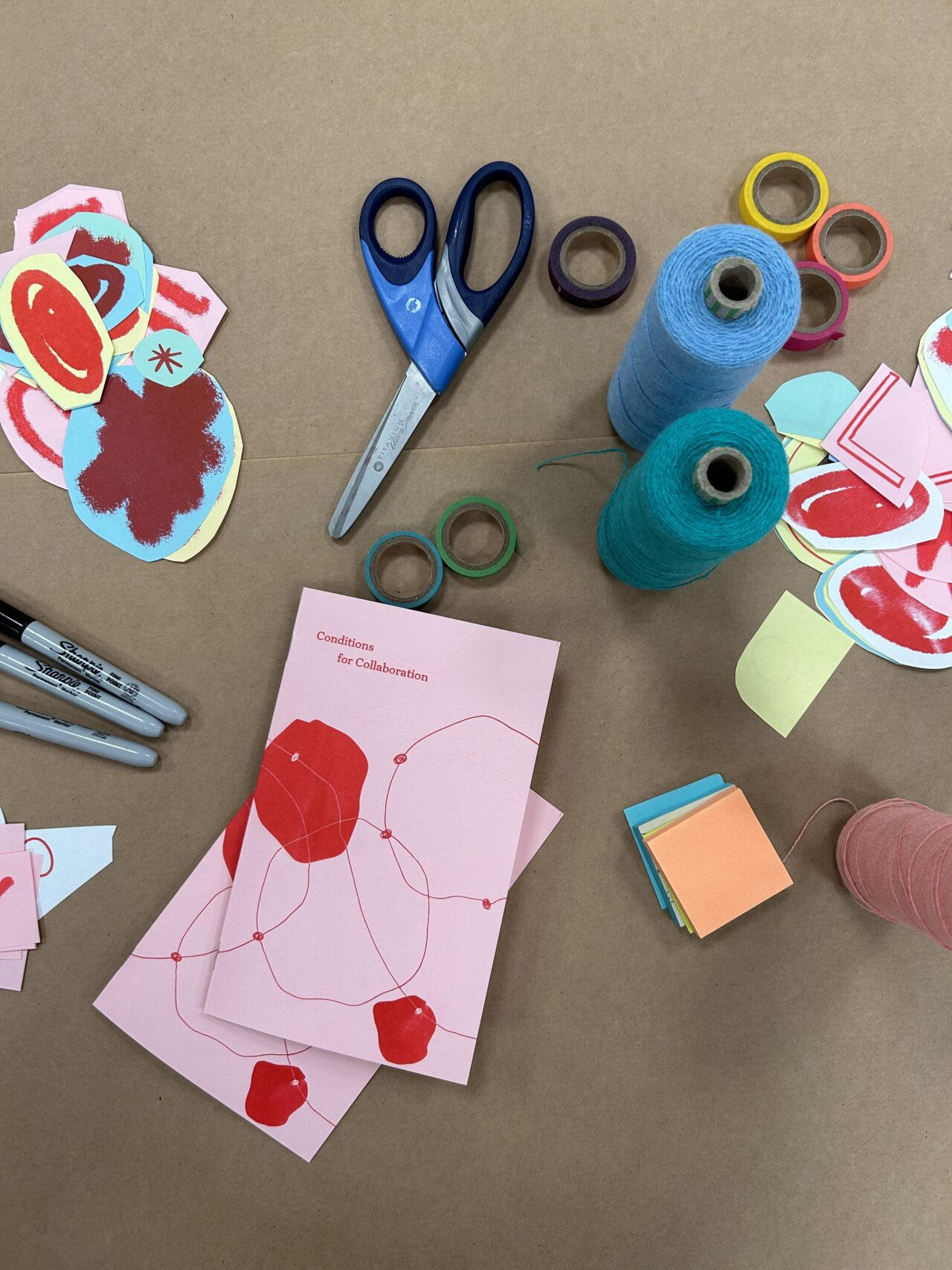Community Updates
Connecting through Collaboration
Posted on February 13, 2024 | Updated February 13, 2024, 12:30pm

Collaboration is something I think about often. I have often said that my brain works best in conversation with another person – which is probably why I socialize so much! I love the give and take of collaborative brainstorming and the way one person’s ideas sparks totally different paths of thinking in my own head. But I’ve also had plenty of collaborations that don’t work – some of them fizzle out after that initial conversation; others fail more spectacularly, compromising the project and sometimes even relationships.
So I was thrilled when faculty members Jean Chisholm and Annie Canto agreed to run a “Lunch and Learn” on what they learned about collaborative teaching through their Teaching Associate research project. Jean and Annie documented their research in an essay available here – I highly encourage people to take a look. If you want a super cute zine version of the essay, in Valentine’s Day colours no less, we also have a few extra copies in the TLC.
What I learned through Jean and Annie’s presentation and their hands-on collaborative activity is that good collaboration is both very easy and very hard. That push and pull of different ideas—which is what I love—can also sometimes feel like a tug of war. Which is fine if the people at either end of the rope feel equally matched. But if one person has (or is perceived to have) more power than the other, then the push and pull can give way to one person ending up face down in the mud.

So how do we create conditions for good collaboration? The first answer seems to be time. Time to get to know your collaborators, to understand what each person brings, to build trust and shared understanding of the work. One participant gave the example of a friend who literally matches her pace every time they walk together: in good collaborations, everyone is willing to slow down or speed up so you can all work at the same pace. In a deadline-driven, time-scarcity environment like a university, it’s clear what one of the biggest barriers to collaboration might be.
Another factor is being open and explicit about how you will work together and any constraints that might affect the work. If there’s a power imbalance, the person with the greater power needs to name it and talk openly about how you can work with, around or through it. If there’s a hard deadline or a particular outcome needed, bring that to the table so that everyone has the same understanding and expectation. Clear communication and transparency about decision-making is also key here: we even discussed creating something similar to a group agreement at the start of the collaboration to avoid misunderstandings.
The final factor that can make or break a collaboration is mutual respect for what each person brings to the collaboration (which can subsequently help determine who does what in the project). Knowing who is in the room with you, valuing their contribution, and making sure they know you value their contribution, all go a long way to building trust and goodwill, both of which are essential to an effective collaboration.
We talked about a lot of other things as well – including Jean and Annie’s really interesting ghost curriculum project which you can also read about in their essay – but those were the ideas that really stuck with me. How about you? Have you experimented with collaboration in your teaching? If yes, how has it gone? I’d love to hear more if you want to email me: hfitzgerald@ecuad.ca
